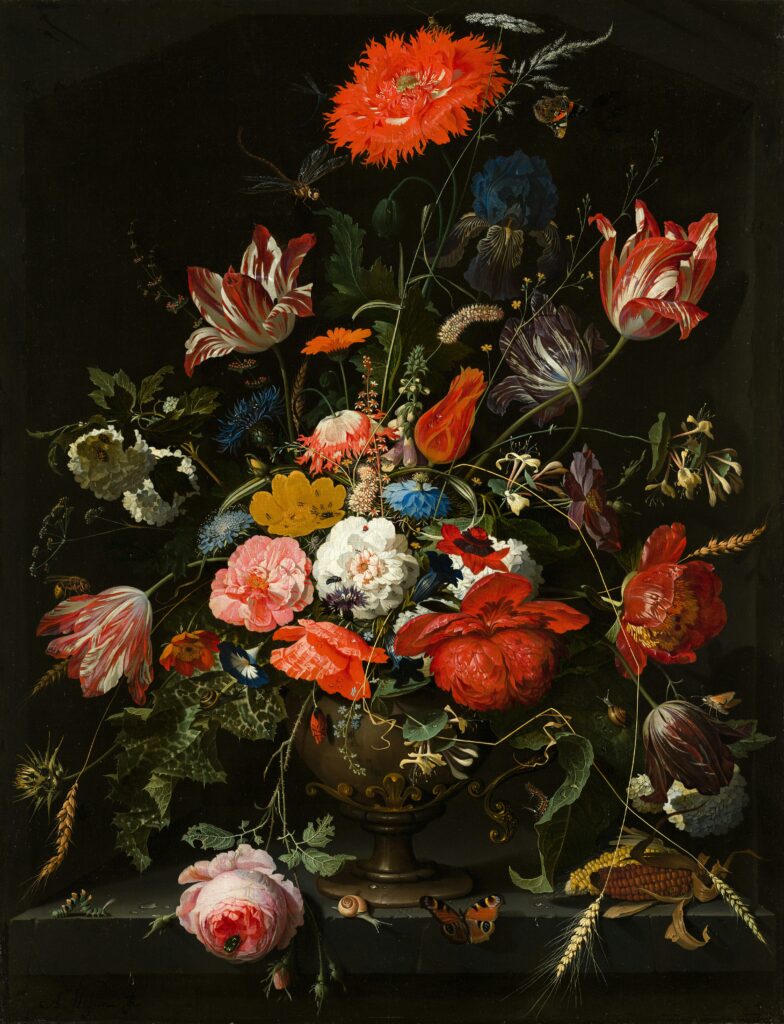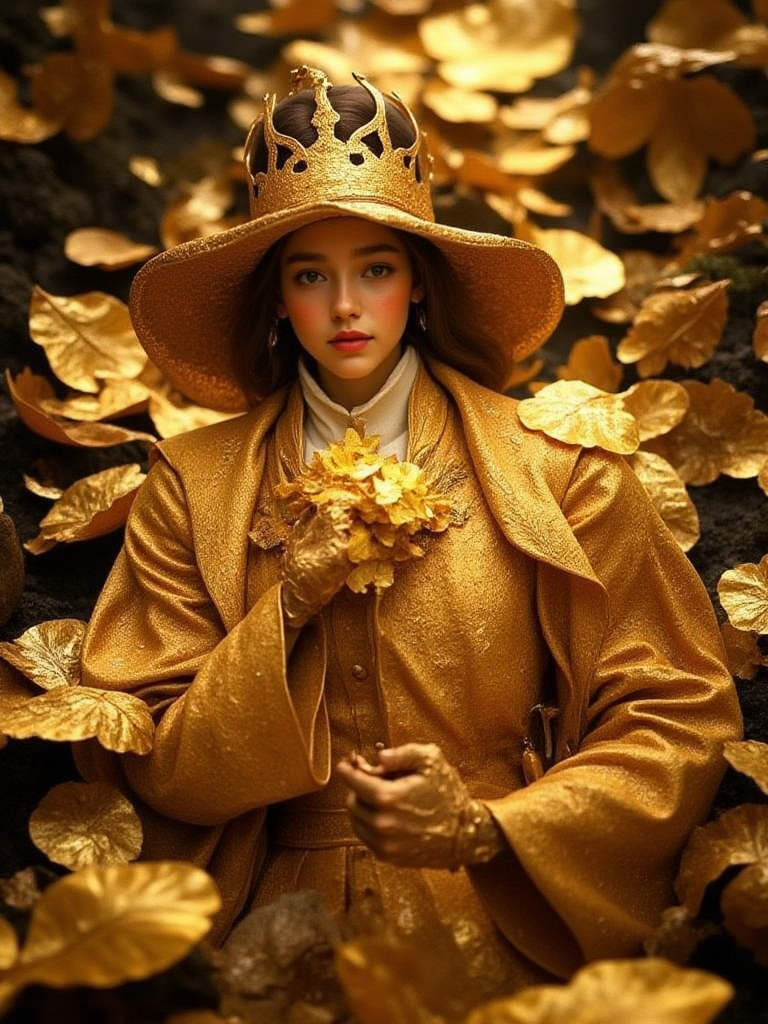Famous Gold Leaf Artists Through History


🌟 Glimmering through the ages, gold leaf has captivated artists and audiences alike. From ancient Egyptian tombs to modern art galleries, this delicate material has transformed ordinary surfaces into extraordinary masterpieces. But who are the visionaries behind these golden wonders?
Prepare to embark on a dazzling journey through time as we unveil the Famous Gold Leaf Artists Through History. 🎨✨ You’ll discover how these brilliant minds pushed the boundaries of creativity, turning sheets of gold into breathtaking works of art. From Renaissance masters to contemporary innovators, each artist has left an indelible mark on the world of golden artistry.
In this golden exploration, we’ll traverse continents and centuries, uncovering the origins of gold leaf in art, marveling at Renaissance masterpieces, and delving into Asian gold leaf traditions. We’ll also spotlight today’s gold leaf virtuosos and reveal the intricate techniques and materials that bring these shimmering creations to life. Get ready to be inspired by the Midas touch of history’s most talented gold leaf artists!

The Origins of Gold Leaf in Art
Ancient Egyptian gilding techniques
The use of gold leaf in art can be traced back to ancient Egypt, where it was considered a symbol of divine power and eternal life. Egyptian artisans developed sophisticated gilding techniques to adorn everything from royal tombs to sacred objects.
- Wooden sarcophagi
- Statues of deities
- Funerary masks (e.g., Tutankhamun’s)
- Temple decorations
The Egyptians used a method called “water gilding,” which involved applying a thin layer of gesso (a mixture of chalk and animal glue) to the surface, followed by a clay-based bole. The gold leaf was then carefully applied and burnished to achieve a brilliant shine.
Byzantine icons and mosaics
The Byzantine Empire elevated gold leaf art to new heights, incorporating it extensively in religious iconography and grand mosaics. The use of gold symbolized the divine light and heavenly realm.
| Byzantine Gold Leaf Art | Characteristics |
|---|---|
| Icons | Flat, stylized figures on gold backgrounds |
| Mosaics | Intricate designs with gold tesserae |
| Illuminated manuscripts | Gold leaf embellishments and backgrounds |
The Hagia Sophia in Istanbul stands as a testament to Byzantine mastery of gold leaf mosaics, with its stunning dome adorned with millions of gold tesserae.
Medieval illuminated manuscripts
During the Middle Ages, gold leaf found its way into the creation of exquisite illuminated manuscripts. Monasteries across Europe became centers for this intricate art form, where skilled scribes and artists collaborated to produce breathtaking religious texts.
Gold leaf was used to:
- Highlight initial letters
- Create ornate borders
- Illustrate important scenes
- Emphasize sacred text
The Book of Kells, an Irish illuminated manuscript from the 9th century, exemplifies the pinnacle of medieval gold leaf artistry, featuring intricate Celtic designs and elaborate illustrations enhanced with gold.
As we explore the evolution of gold leaf in art, we’ll next examine how Renaissance masters further refined these techniques and elevated gold leaf to new artistic heights.

Renaissance Masters of Gold Leaf
The Renaissance period saw a remarkable resurgence in the use of gold leaf, with artists pushing the boundaries of this ancient technique to create breathtaking masterpieces. Let’s explore the works of three influential Renaissance masters who elevated gold leaf artistry to new heights.
A. Giotto di Bondone’s revolutionary frescoes
Giotto di Bondone, often hailed as the father of Renaissance painting, revolutionized the use of gold leaf in frescoes. His innovative techniques brought a new level of realism and depth to religious scenes, breaking away from the flat, stylized Byzantine tradition.
Key aspects of Giotto’s gold leaf mastery:
- Subtle use of gold to highlight divine figures
- Integration of gold with naturalistic color palettes
- Creation of three-dimensional effects through gold leaf application
B. Fra Angelico’s heavenly altarpieces
Fra Angelico, a Dominican friar and painter, created some of the most ethereal and spiritually charged altarpieces of the Renaissance. His masterful use of gold leaf contributed to the otherworldly beauty of his works.
Characteristics of Fra Angelico’s gold leaf art:
- Delicate gold halos surrounding holy figures
- Intricate patterns in gold on garments and backgrounds
- Harmonious blend of gold with vibrant tempera colors
C. Gustav Klimt’s golden phase
While not strictly a Renaissance artist, Gustav Klimt’s “Golden Phase” represents a modern revival of Renaissance gold leaf techniques. His iconic works from this period seamlessly blend Byzantine influences with Art Nouveau style.
| Aspect | Renaissance Influence | Modern Innovation |
|---|---|---|
| Composition | Use of gold backgrounds | Integration of abstract patterns |
| Technique | Traditional gold leaf application | Combination with oil paints and mosaics |
| Subjects | Religious themes | Secular and erotic imagery |
Klimt’s golden masterpieces, such as “The Kiss” and “Portrait of Adele Bloch-Bauer I,” showcase his unique approach to gold leaf artistry, creating a bridge between Renaissance traditions and modern artistic expression.
As we move forward, we’ll explore how these Renaissance techniques influenced and contrasted with Asian gold leaf traditions, highlighting the global impact of this timeless art form.
Asian Gold Leaf Traditions
Now that we’ve explored the Renaissance masters, let’s turn our attention to the rich traditions of gold leaf in Asian art. The use of gold leaf in Asian cultures has a long and illustrious history, with each region developing its unique techniques and styles.
A. Indian miniature paintings
Indian miniature paintings are renowned for their intricate details and vibrant colors, often enhanced by the use of gold leaf. These small-scale artworks typically depict religious scenes, royal court life, or natural landscapes.
- Techniques used:
- Fine brush application
- Burnishing for a smooth finish
- Layering with other pigments
B. Japanese folding screens and lacquerware
Japanese artists have masterfully incorporated gold leaf into their traditional art forms, particularly in folding screens (byōbu) and lacquerware.
| Art Form | Characteristics | Notable Techniques |
|---|---|---|
| Folding Screens | Large-scale, often depicting nature scenes | Gold ground, cloud patterns |
| Lacquerware | Decorative objects with smooth, glossy surface | Maki-e (sprinkled picture) technique |
C. Thai temple decorations
Thai Buddhist temples are famous for their lavish use of gold leaf, creating awe-inspiring interiors and exteriors. This tradition reflects the importance of gold in Thai culture and its association with divinity and royalty.
- Common applications:
- Buddha statues
- Wall murals
- Architectural details (roofs, spires)
The use of gold leaf in these Asian traditions not only serves an aesthetic purpose but also carries deep cultural and spiritual significance. As we move forward, we’ll explore how contemporary artists have been inspired by these rich traditions and incorporated gold leaf into modern art forms.
Contemporary Gold Leaf Artists
As we explore the evolution of gold leaf in art, we now turn our attention to contemporary artists who have breathed new life into this ancient technique. These modern masters have pushed the boundaries of traditional gold leaf applications, creating innovative and thought-provoking works that challenge our perceptions of art and society.
Yves Klein’s Monochrome Gold Paintings
Yves Klein, a pioneer of the nouveau réalisme movement, revolutionized the use of gold leaf in contemporary art. His iconic “Monogold” series, created in the early 1960s, featured canvases entirely covered in gold leaf. Klein’s approach was both minimalist and profound, inviting viewers to contemplate the spiritual and material value of gold.
| Aspect | Description |
|---|---|
| Technique | Entire canvas covered in gold leaf |
| Style | Minimalist, monochrome |
| Significance | Explored the spiritual and material value of gold |
Takashi Murakami’s Pop Art Interpretations
Japanese artist Takashi Murakami has seamlessly blended traditional Japanese art techniques with contemporary pop culture, often incorporating gold leaf into his vibrant works. Murakami’s use of gold leaf pays homage to Japan’s rich artistic heritage while infusing it with modern sensibilities.
Key elements of Murakami’s gold leaf art:
- Fusion of traditional Japanese aesthetics with pop culture imagery
- Intricate patterns and designs enhanced by gold leaf accents
- Large-scale installations and sculptures featuring gold elements
Ai Weiwei’s Political Statements in Gold
Chinese artist and activist Ai Weiwei has employed gold leaf in his provocative works to make powerful political statements. His use of this precious material often serves to highlight issues of wealth disparity, corruption, and human rights.
Notable gold leaf works by Ai Weiwei include:
- “Gilded Cage” – a large-scale installation commenting on immigration and freedom
- “Study of Perspective” series – featuring gold-plated middle fingers as a critique of authority
- “Zodiac Heads” – golden sculptures exploring cultural heritage and repatriation
These contemporary artists demonstrate the enduring allure and versatility of gold leaf in modern art, using it to express complex ideas and emotions. Next, we’ll delve into the techniques and materials used by artists throughout history to create these stunning gold leaf masterpieces.
Techniques and Materials
Types of Gold Leaf and Their Properties
Gold leaf comes in various types, each with unique properties suitable for different artistic applications:
- Pure gold leaf (24 karat)
- White gold leaf
- Composition gold leaf
- Genuine gold leaf
- Imitation gold leaf
| Type | Composition | Properties | Best Use |
|---|---|---|---|
| Pure gold leaf | 100% gold | Most durable, non-tarnishing | Exterior gilding, high-end art |
| White gold leaf | Gold + silver/palladium | Cooler tone, subtle sheen | Interior design, contemporary art |
| Composition gold leaf | Gold + other metals | Less expensive, varied colors | Decorative arts, furniture |
| Genuine gold leaf | Varies (18-23 karat) | Balance of quality and cost | General gilding, mixed media |
| Imitation gold leaf | Copper + zinc | Affordable, less durable | Temporary installations, practice |
Application Methods and Tools
Artists employ various techniques to apply gold leaf, depending on the surface and desired effect:
- Water gilding
- Oil gilding
- Mordant gilding
Essential tools for gold leaf application include:
- Gilder’s tip: A specialized brush for lifting and placing gold leaf
- Gilding cushion: A padded surface for cutting and handling gold leaf
- Gilding knife: Used for cutting gold leaf to size
- Burnisher: A tool for polishing and smoothing applied gold leaf
- Size: An adhesive used to attach gold leaf to the surface
Preservation and Restoration Challenges
Preserving gold leaf artwork presents unique challenges:
- Sensitivity to environmental factors (humidity, temperature)
- Risk of mechanical damage due to the thin nature of gold leaf
- Oxidation of underlying materials affecting adhesion
Restoration techniques include:
- Careful cleaning with non-abrasive methods
- Consolidation of flaking areas
- Selective reapplication of gold leaf
- Use of protective coatings in some cases
Conservators must balance preserving original materials with maintaining the artwork’s aesthetic integrity. With proper care and restoration, gold leaf artworks can maintain their brilliance for centuries, continuing to captivate viewers with their timeless beauty.
Gold leaf artistry has captivated audiences for centuries, spanning diverse cultures and artistic movements. From its ancient origins to the Renaissance masters who elevated the technique, gold leaf has consistently added a touch of luxury and brilliance to artwork. Asian traditions have further enriched this art form, while contemporary artists continue to push the boundaries of what’s possible with this delicate material.
As we’ve explored the techniques and materials used in gold leaf art, it’s clear that this medium requires skill, patience, and a deep appreciation for craftsmanship. Whether you’re an art enthusiast or an aspiring artist, understanding the rich history and evolving applications of gold leaf can deepen your appreciation for this timeless art form. Let the shimmering allure of gold leaf inspire you to explore its beauty in museums, galleries, or perhaps even in your own artistic endeavors.














Post Comment